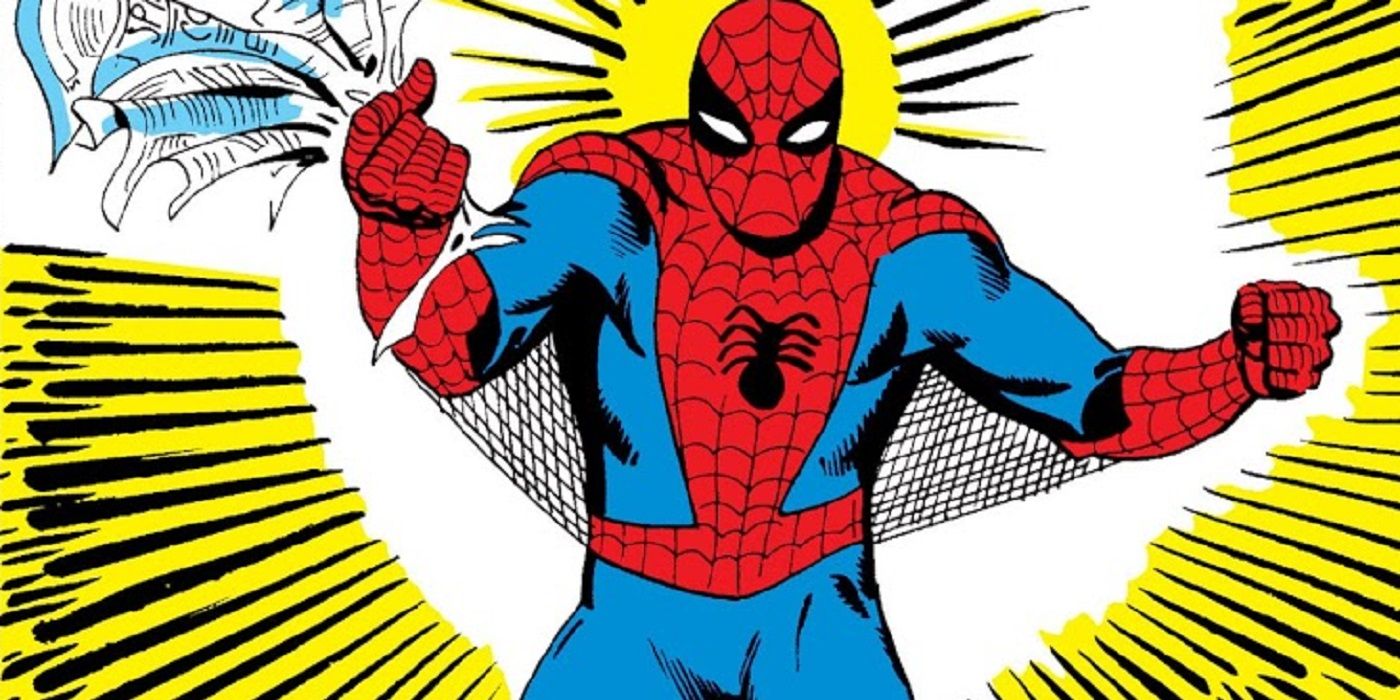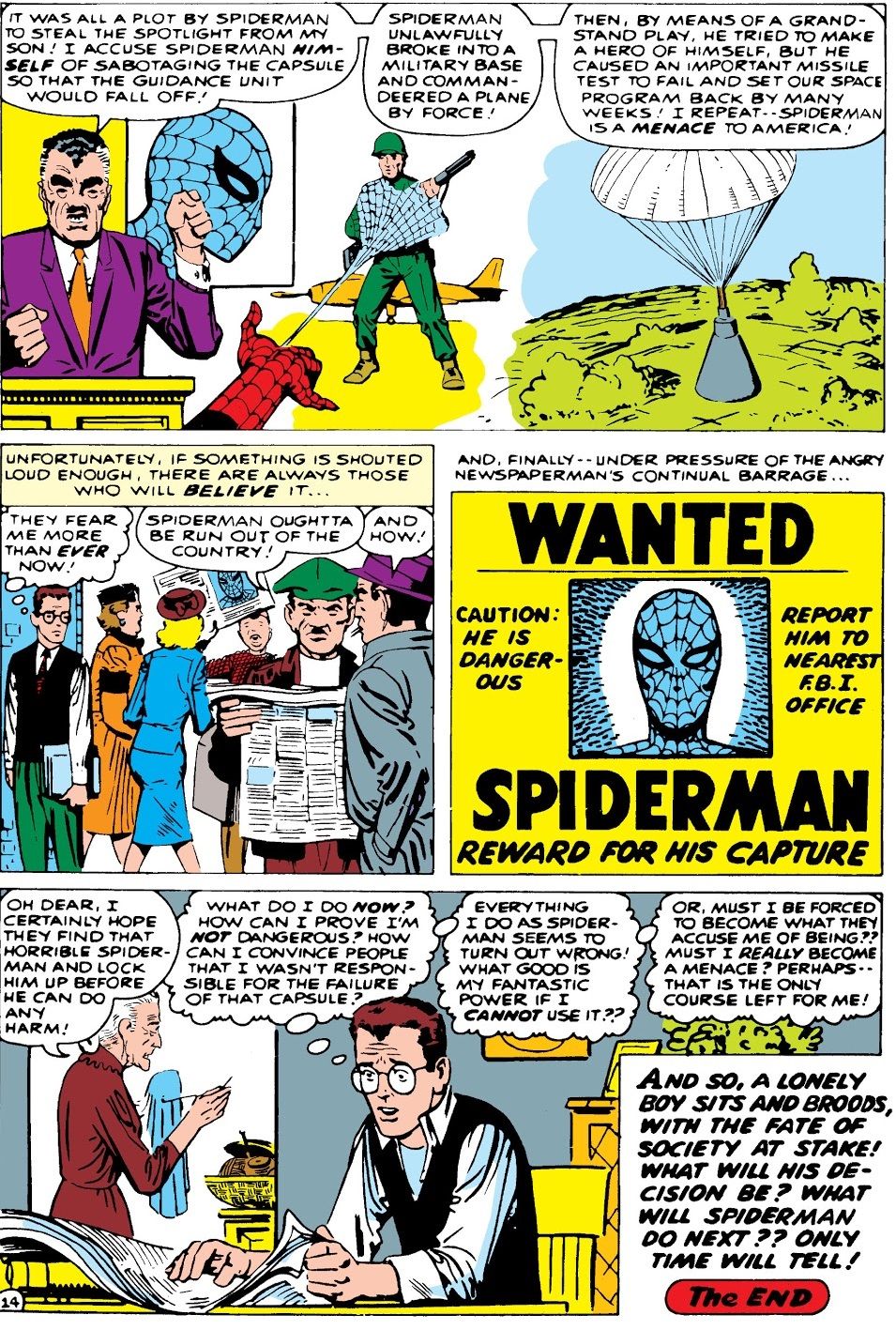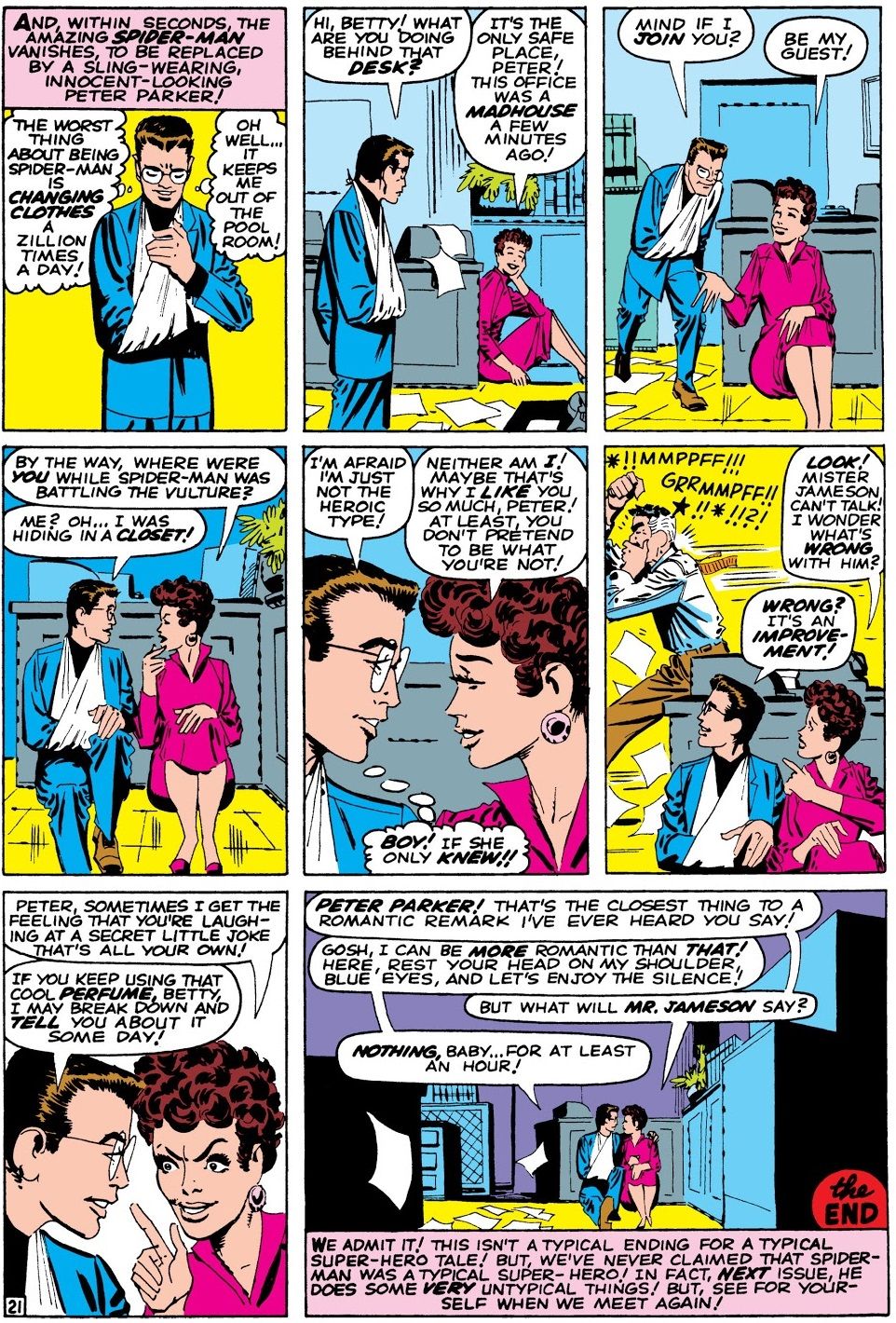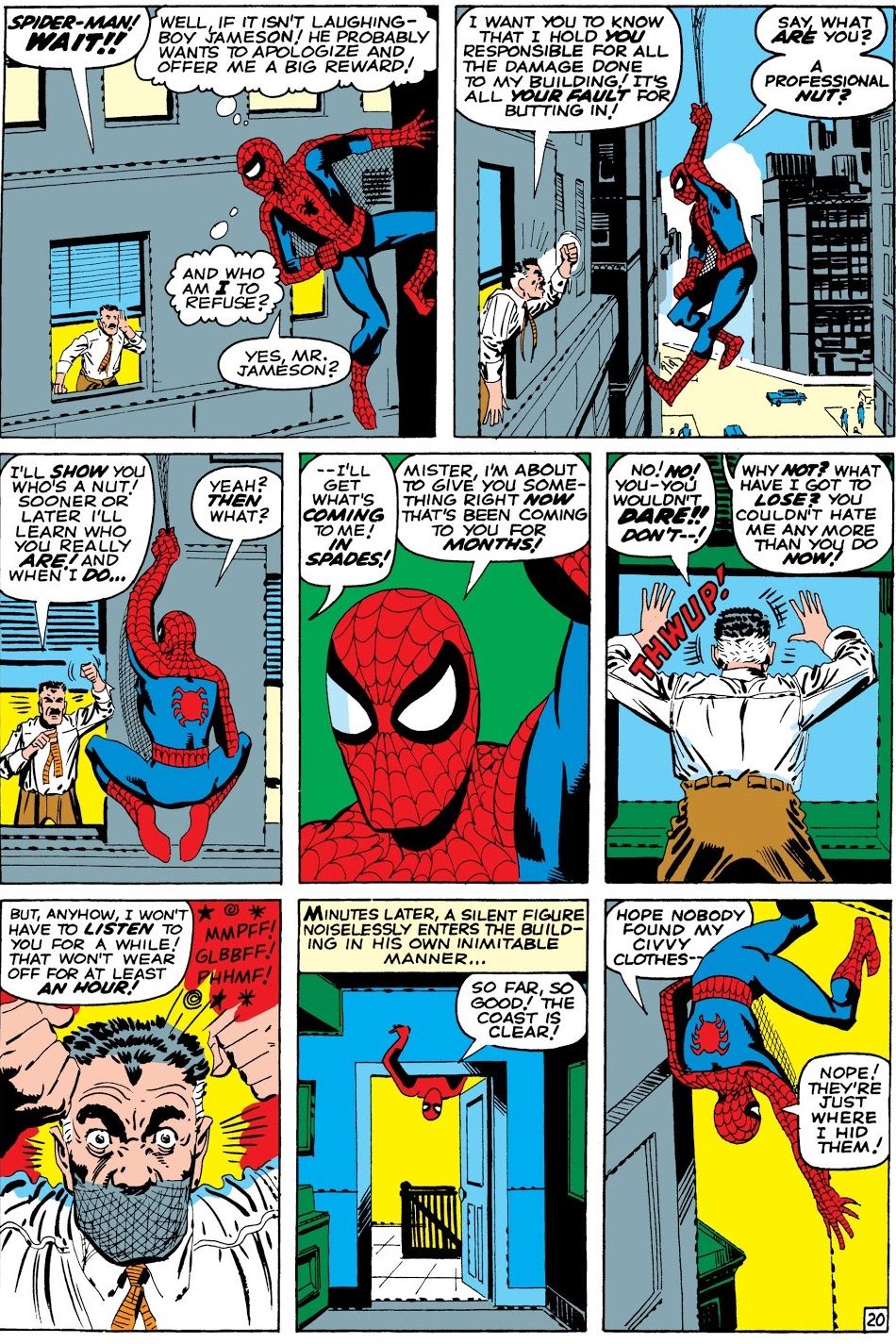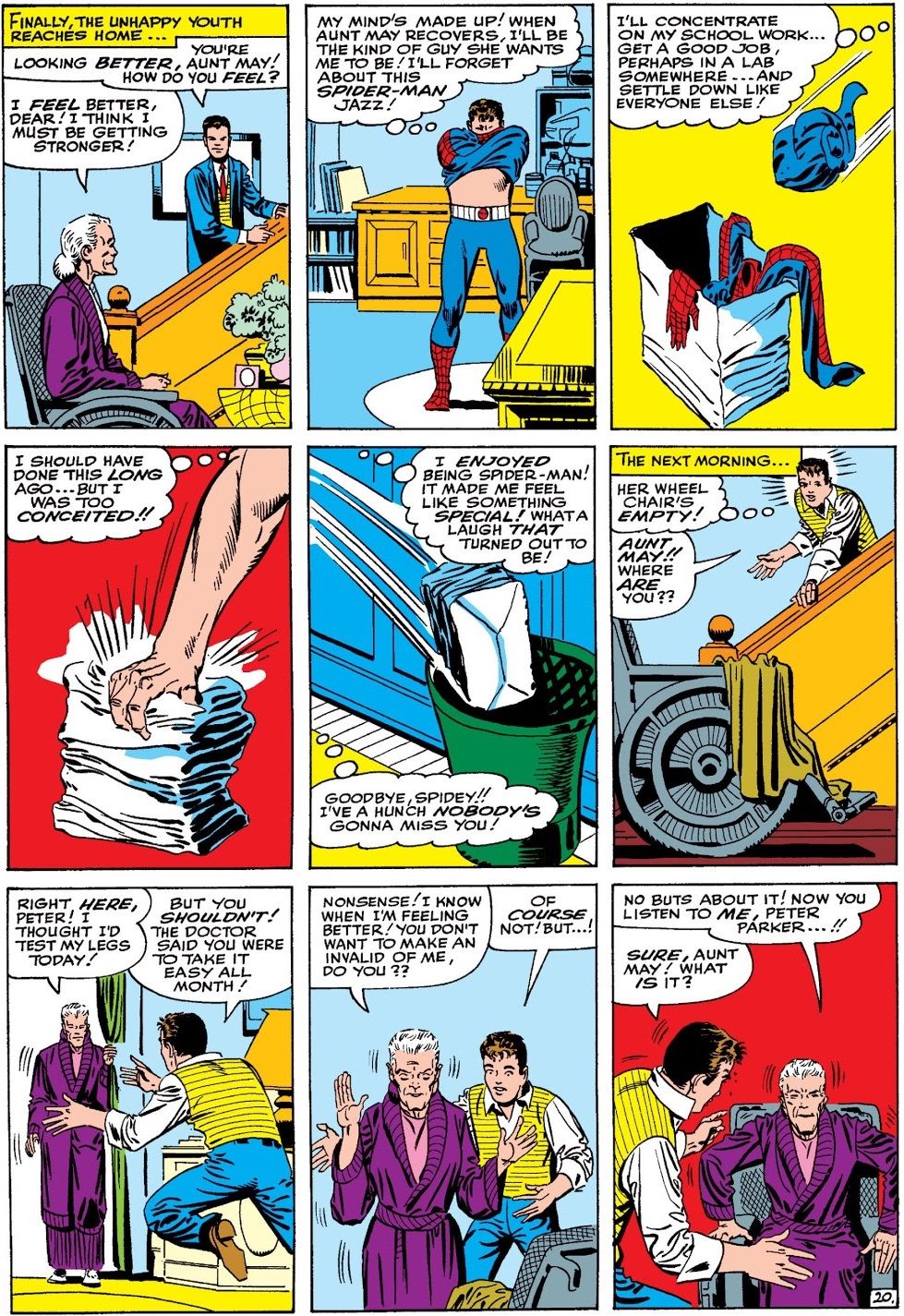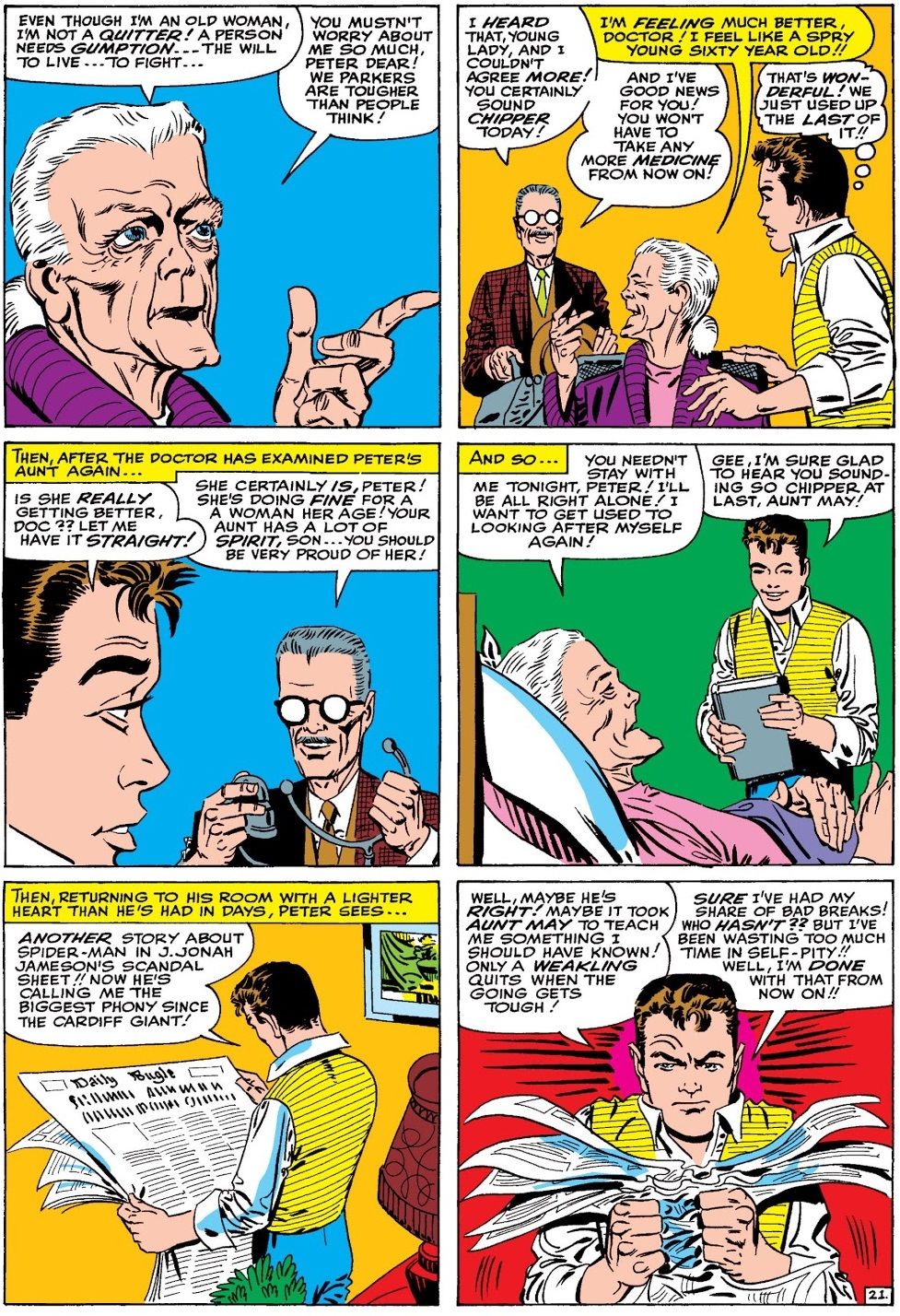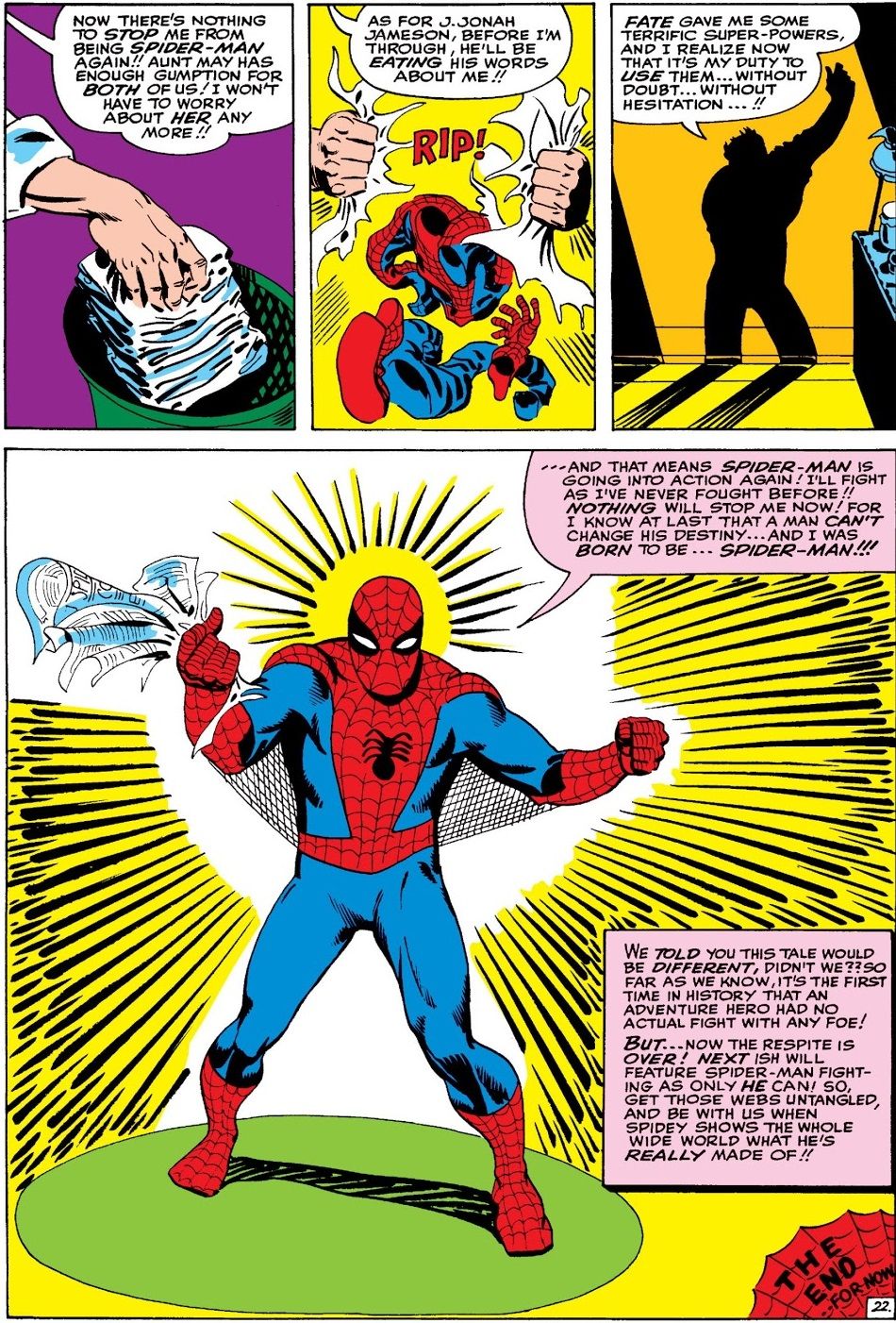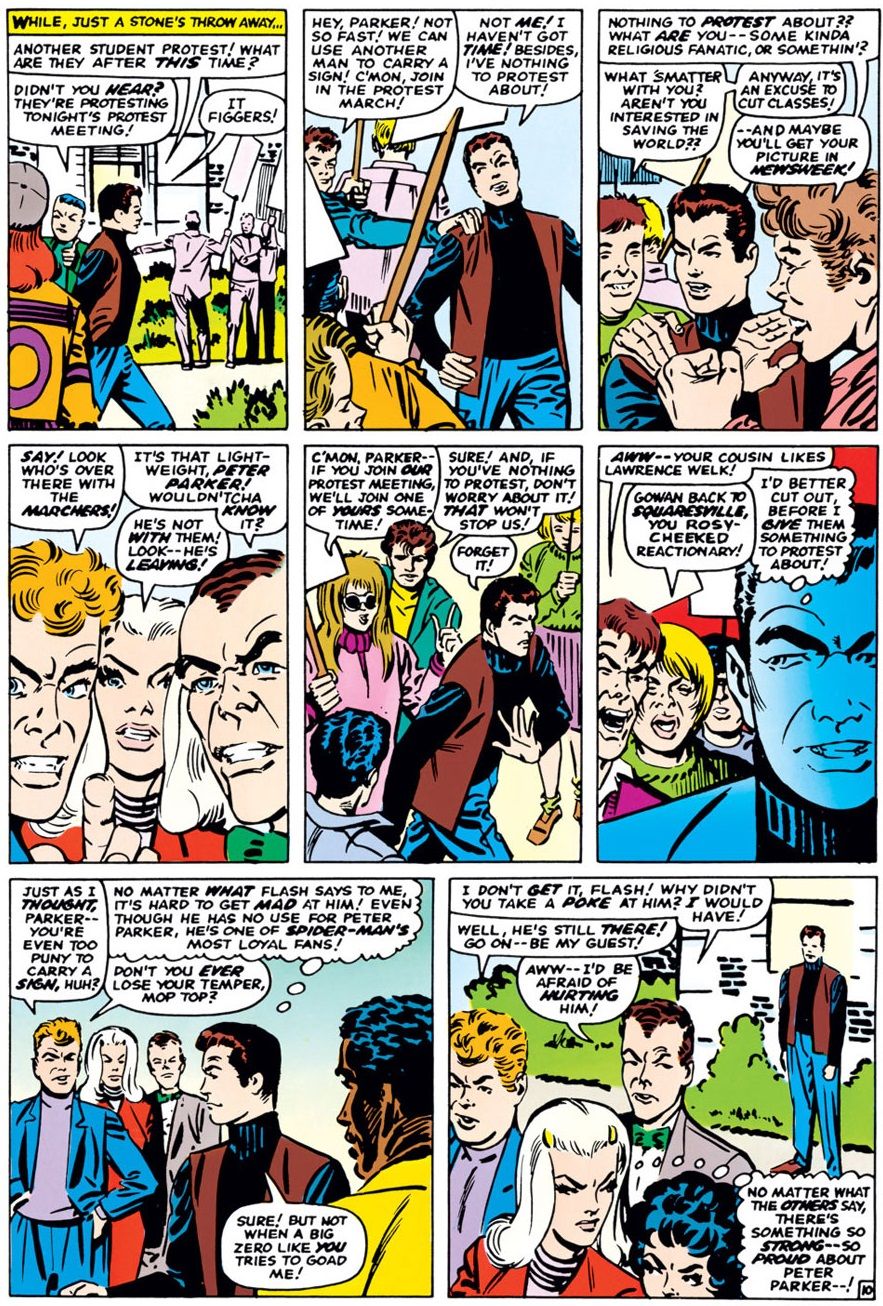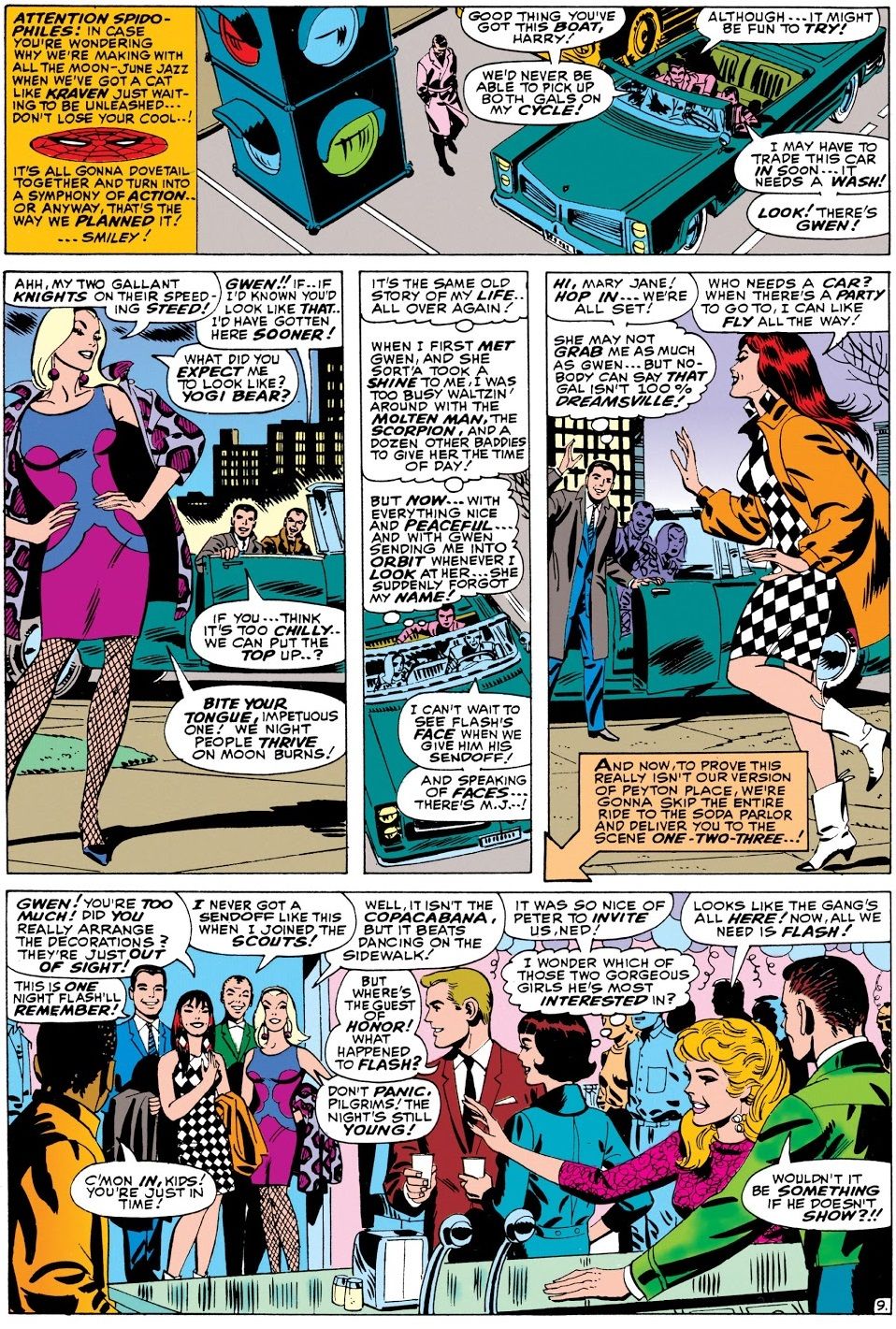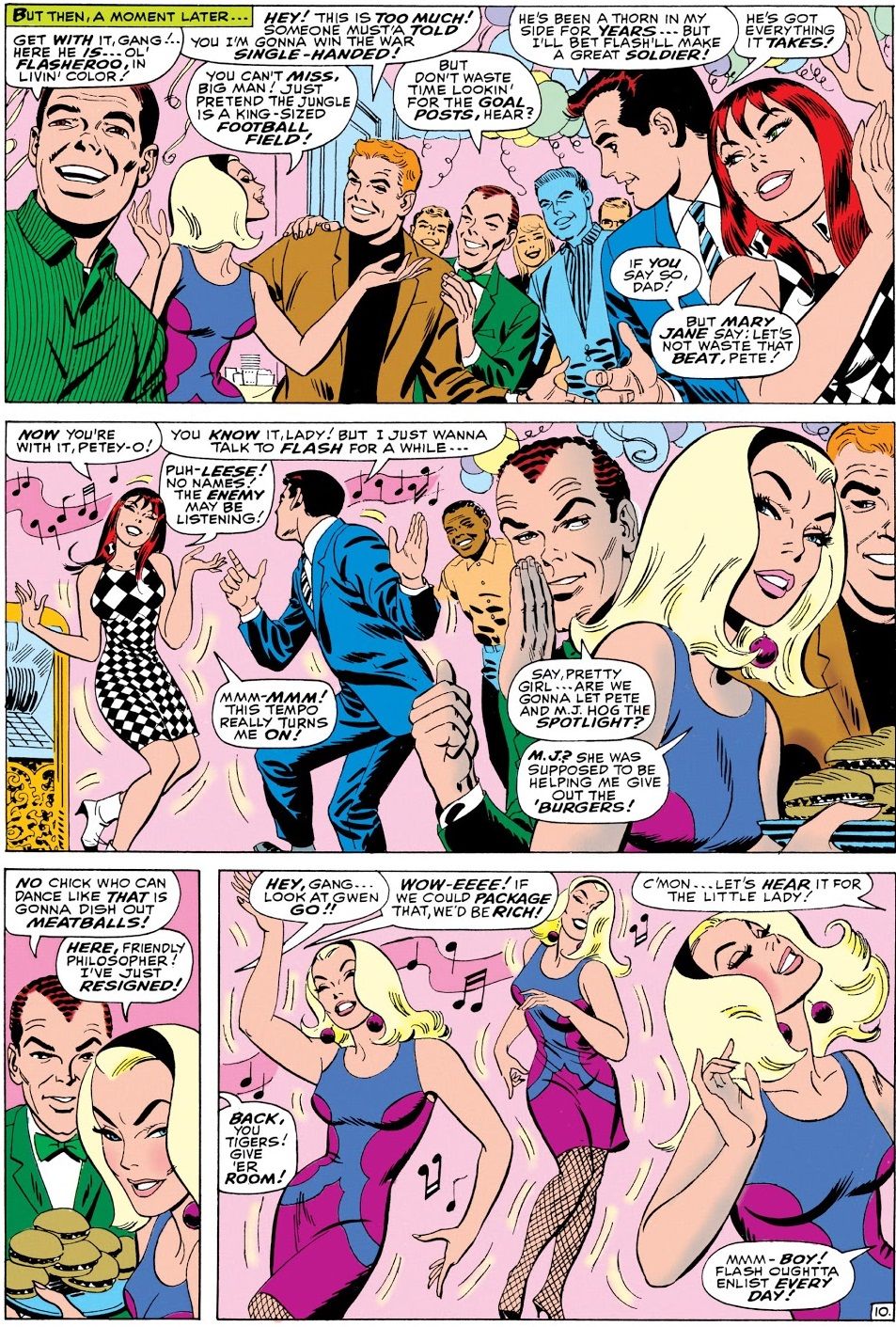I will continue to celebrate Stan Lee's legacy in comic books (and more) with this series, The Life and Times of Stan Lee.
Earlier this year, Steve Ditko passed away. When he passed, I wrote about how Steve Ditko defined Spider-Man for a whole generation of fans. That is certainly true, but it was Stan Lee who ended up fighting to keep Spider-Man as an "everyman," which, in turn, defined the characters for even more generations of fans. Both versions of the character have their merits, so I say this not as a claim that Stan Lee improved on Steve Ditko's ideas, just noting that the portrayal of Spider-Man as an "everyman" over the years was something that occurred due to Lee's efforts.
RELATED: How Stan Lee Helped Bring Humanity to Superheroes
While Stan Lee was certainly a proponent of having the Marvel heroes deal with "real life" problems, the thing that really made Spider-Man stand out from the others is that things very often went wrong with him, despite him typically saving the day. After all, his very origin story involves him stopping a murderer, but only after he allowed the murderer to escape earlier in the comic and then the murderer kills Spider-Man's beloved Uncle Ben!
Spider-Man was so distinctive that when Marvel decided to give Spider-Man his own title, the first page of the first issue of Amazing Spider-Man outright bragged how different Spider-Man was from other heroes...
And when the first story in the issue ends, look how miserable Spider-Man is! He saved J. Jonah Jameson's son, but Jameson has still turned the public against poor ol' Spidey!
In those early issues, Lee went way overboard with the idea that Spider-Man was different from other comic book superheroes. Check out the ending of Amazing Spider-Man #7...
It's almost too much, really, as a character's novelty sort of loses the, well, novelty if you keep telling the audience how novel the character is. Still, Lee and Ditko managed to keep up with the very high expectations that they made for themselves (well, that Lee made for themselves, that is).
In the early days, Lee and Ditko collaborated on the plots for the stories, but Lee deferred to Ditko on most topics, as Lee really respected Ditko as a creator. When Lee wanted to make the Vulture a large, Sidney Greenstreet-type, he deferred to Ditko's view of the Vulture as a skinny, gaunt looking fellow (of course, soon after Ditko left the series, Lee introduced, what else, a large, Sidney Greenstreet-type in the Kingpin). Ditko would then draw the stories based on the plot and Lee would then add dialogue to Ditko's drawn pages, sometimes making Ditko make changes to the art to match Lee's script (annoyingly, Ditko would only be paid for the accepted pages and not anything that he had to re-draw).
Lee and Ditko were in sync early on, with one issue, Amazing Spider-Man #18, really showing how the two were of one mind in how Spider-Man should be presented. In the issue, Spider-Man decided to quit before he ultimately decided to stick it out (his sense of responsibility was always strong enough to make Peter make the right choice in the end, but it is important to note that Peter was always someone who struggled with doing the right thing). The issue was an especially big deal because it showed just how popular the personal life of Spider-Man was, as Spider-Man fought no supervillains the entire issue (Sandman tries to fight him but he just runs away from the fight)...
In 1965, Esquire magazine polled college students and found that Spider-Man was just as popular to them as other generational talents like Bob Dylan. One pollee brilliantly explained Spider-Man's appeal, "beset by woes, money problems, and the question of existence. In short, he is one of us."
The problem was, though, that Steve Ditko was beginning to think that that was not a good thing.
Page 2: [valnet-url-page page=2 paginated=0 text='The visions of Ditko and Lee begin to differ...']
Steve Ditko eventually got frustrated with Lee's corrections and the two stopped talking to each other. Starting with Amazing Spider-Man #25, Ditko would be credited for plotting the stories, which he would do on his own and Lee would then script the pages as they came in, based on plots Ditko came up with on his own (due to the whole, you know, not talking to each other thing).
RELATED: Stan Lee, Legendary Comics Creator, Passes Away
Lee would still make changes, but it would be others (production manager Sol Brodsky, typically) who would communicate the changes to Ditko. Lee mostly left Ditko alone, but Marvel Publisher Martin Goodman was on Ditko a lot to give the series more action.
Ditko had a number of very legitimate beefs with Marvel. The comic book was a big hit and yet Goodman wouldn't just leave him alone and let him do what he wanted with the plots. After all, his plots were going over really well, so why the micro-management? However, some financial issues were also at play, as Spider-Man was soon to receive an animated series and Ditko wasn't going to see a penny from the show. Nor did Ditko receive any money for the then-slowly burgeoning licensing of Spider-Man as a character for toys and costumes and the like.
However, a more philosophical dispute between Ditko and Stan Lee came over how Spider-Man should be depicted now that he had graduated high school and entered college. Ditko, a follower of Ayn Rand and Obkectivism, was okay with the idea of a young teen not being a "true" hero (that is, having some gray areas), but now that Spider-Man was in college, Ditko wanted Spidey to become more of an objectively heroic character. Stan Lee and Martin Goodman, though, wanted to keep Spider-Man as an "everyman." That was the exact opposite of what Ditko wanted for the character.
Ditko's stricter views came out in other areas, as well, like Ditko's disdain for student protests. Check out this hilarious sequence from Amazing Spider-Man #38, hilarious because Ditko clearly draws Peter Parker as being disgusted at the idea of school protests and Lee has to try to save the sequence through the dialogue and thought balloons to keep Peter from espousing the exact views that Ditko clearly wanted him to have in those panels!
In fact, knowing that that issue was Ditko's final issue of the series, it suggests that the knowledge that Lee, as the scripter, would always have, in effect, the final say over how the character would be depicted, might have played a role in that being the "final straw," as it were, for Ditko.
After John Romita took over and slowly loosened his initial attempt to just ape Ditko's style, the book really embraced the "everyman" feel, with Amazing Spider-Man #47 seeing Flash Thompson heading off to Vietnam and Peter Parker being caught in a sort of love triangle between Gwen Stacy and Mary Jane Watson...
Whether better or worse than what Ditko had planned for the character, Lee's new approach with the character saw Spider-Man grow to new heights of popularity and, generally speaking, the Lee/Romita years were the defining take on Spider-Man for the next few decades.
If you enjoy Spider-Man as an everyman character, then Stan Lee is who you should be thanking.
I'm sure you all have a lot of things that you'd like to see me cover regarding Stan Lee, so if you have any ideas, drop me a line at brianc@cbr.com

